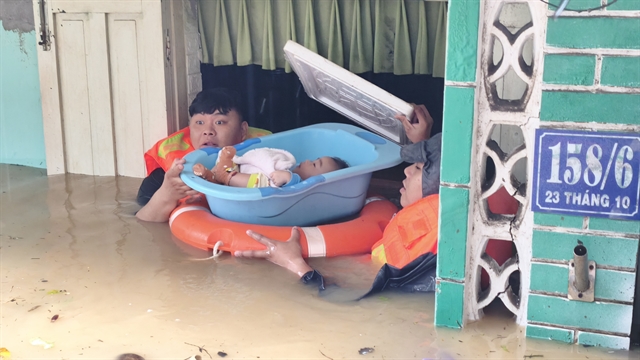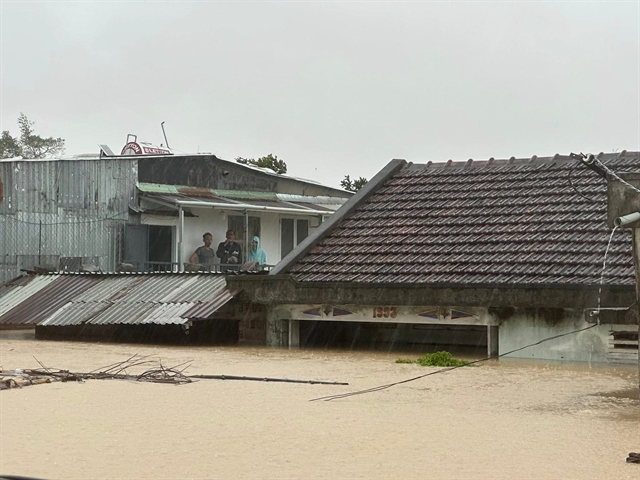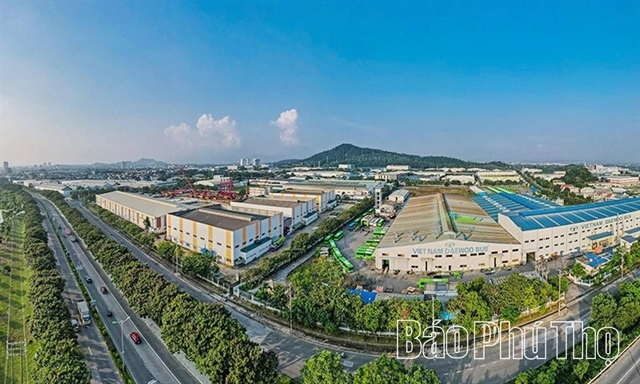 Society
Society

 |
| Two rescue officers carry a child out of a severely flooded home in Tây Nha Trang Ward, Khánh Hòa Province, on Thursday. — VNA/VNS Photo |
KHÁNH HÒA — Torrential rains continued to batter central Việt Nam on Thursday, pushing key rivers above historic peaks and forcing people to evacuate overnight as military units rushed in to rescue those stranded by fast-rising waters.
The National Centre for Hydro-Meteorological Forecasting said Đà Nẵng, eastern Quảng Ngãi, Đắk Lắk and Khánh Hòa saw moderate to very heavy rain from early Thursday, with some localities recording more than 450mm.
Rainfall between November 16 and Thursday morning reached extreme levels in the mountainous communes of Khánh Sơn and Khánh Vĩnh in Khánh Hòa, where gauges registered between 400 and 600mm.
Khánh Hiệp Commune reported 994.7mm of rain while Sơn Thái logged 834.5mm.
Flood peaks
Data from provincial hydrological stations showed floodwaters climbing at dangerous speed.
At 6am Thursday, water on the Dinh River hit 6.66m, nearly a metre above the highest warning level and surpassing the 1986 historic flood. On the Cái River, the Đồng Trăng Station measured 13.14m, slightly below the infamous 2009 peak.
Forecasters warned the Ba River could exceed its 1993 record flood level of 5.21m later on Thursday before receding slowly.
Rivers in Đắk Lắk and Khánh Hòa are also expected to rise further, with several stations predicted to remain above Level 3 – Việt Nam’s highest danger threshold – through Friday.
Flash floods and landslides remain a high risk along mountain passes and narrow valleys, including the Khánh Lê Pass and Nguyễn Tất Thành Avenue in Khánh Hòa, and the National Highway 27C.
Widespread flooding
Flooding has engulfed large parts of Khánh Hòa and low-lying areas of Ninh Thuận, with residents reporting homes submerged to roof height in some neighbourhoods.
Local authorities said many households sent urgent calls for help overnight as water levels rose faster than expected.
In response to a request from Khánh Hòa, Naval Region 4 and the Naval Academy deployed more than 300 officers and soldiers, along with boats, rescue equipment and food supplies, starting late Wednesday.
At 3am Thursday, a rescue team reached the isolated hamlet of Cửu Lợi 3 in Cam Lâm Commune and evacuated nine people trapped by floodwaters. Military and police forces continued evacuations across the province through the morning.
Elsewhere along the central coast, water levels on major rivers varied depending on local rainfall.
 |
| Floodwaters engulf homes in Gia Lai. |
The Kôn River has already peaked and is receding, while floods on the Thu Bồn River are gradually falling below Level 2. Rivers from Huế to Gia Lai generally showed downward trends, but conditions to the south remain volatile.
Forecasters warned that rivers in Đắk Lắk and Khánh Hòa could continue rising over the next 24 hours, with some places topping the highest warning level.
Authorities urged dam operators to manage reservoir releases carefully to avoid overwhelming downstream communities.
Marine conditions
Strong northeasterly winds of up to Level 8 on the Beaufort scale, gusting up to Level 10, swept across the northern East Sea (internationally known as the South China Sea) on Thursday, whipping up four-to-six-metre waves.
Offshore islands, including Bạch Long Vĩ, Cồn Cỏ and Lý Sơn, reported sustained winds of between Level 6 to 8. The Gulf of Tonkin is forecast to see waves of up to 5m through Thursday night.
In the north, Hà Nội and surrounding provinces remained cold and mostly cloudy, with temperatures dipping to between 14 and 16 degrees Celsius and some upland areas dropping below 10 degrees.
Sunshine is expected to return briefly in the afternoon. The northwest and northeast both faced severe cold in high-mountain areas.
The southern region, including HCM City, had scattered showers and thunderstorms on Thursday, most of them arriving in the late afternoon and evening.
Some localities could see rainfall exceeding 50mm. Forecasters warned of sudden gusts, lightning and hail in stronger cells. — VNS




